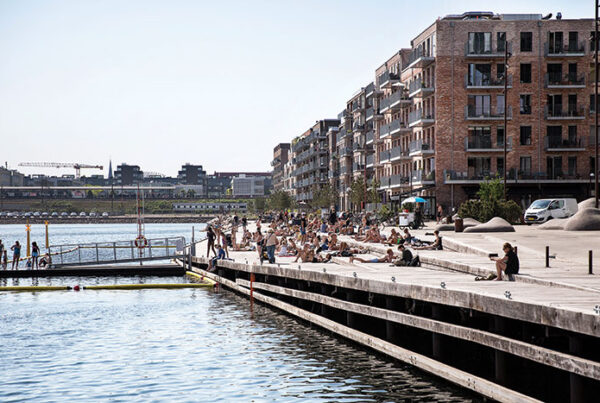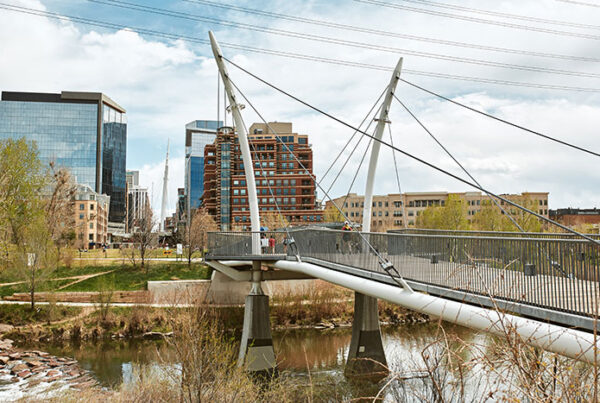A Tokyo study finds ancient institutions to be as important as massive investment in disaster-prevention infrastructure in protecting Japanese society from natural catastrophes.
A ULI urban resilience study shows how culture can contribute to the resilience of a city by driving mutual cooperation among residents, supporting the high costs of infrastructure investment, and inspiring private developers to accept and exceed some of the strictest building regulation in the world.
The study, In the Eye of the Storm, looks at Tokyo’s experience in responding to centuries of natural disasters—typhoons, floods, earthquakes, volcanic eruptions, tsunamis, and droughts. The city’s active neighborhoods—known as chonaikai—are shown to provide an enduring social nucleus around which disaster preparation and response can be organized. Their matsuri festivals reinforce community ties while the festivals’ disaster-prevention groups remain active all year round. Japan’s volunteer fire brigades, the shobodan, promote awareness of local hazards and act as local leaders in disaster prevention.
This report is available on Knowledge Finder.
Tokyo’s investors and landlords respond to the need for resilient urban design with buildings that generally exceed already high official standards. Their emergency infrastructure tends to serve the wider neighborhood, creating a self-contained bubble that allows the neighborhood to continue to function even if utilities and communications links are cut during a disaster. The report highlights Mitsubishi Estate Group’s development of the Marunouchi, Otemachi, and Yurakucho areas, the city’s primary central business district; Mori Building Company’s Roppongi Neighborhood; and Mitsui Fudosan Co.’s modernization of the historic Nihonbashi business district.
Improvements in resilience recoup their construction costs and create opportunities. Completion of the Greater Tokyo Outer Area Discharge Channel allowed Kasukabe City to evolve as a successful logistics center, while the Yokohama International Stadium was made possible through the Tsurumi River Detention Basin.
ULI Asia Pacific President David Faulkner says, “Japan has responded to its geographical vulnerability to natural disasters with a cultural dynamic that has all parts of society pulling together for the common good. That includes its major developers, inspired to act as good corporate citizens and setting high standards for others to follow. Their flagship projects are showcases of resilient design.”
The Japanese capital is Asia’s largest urban area, with 37 million inhabitants, but also the third most threatened in the world by natural disaster. Tokyo’s vulnerability is due to geologic fault lines, its exposure to extreme weather, and its proximity to inland mountain ranges and their fast-flowing rivers. Tokyo has responded to its vulnerability with the following:
- Massive civil engineering campaigns since the second half of the 19th century and most recently following the global financial crisis, when government provided economic stimulus through infrastructure construction.
- The creation of neighborhood-wide, self-reliant infrastructure around new development.
- A national Building Standards Act that provides minimum engineering safety requirements against fires, earthquakes, and other natural disasters.
- Extensive retrofitting: the 1995 Law for Promotion of Renovation for Earthquake-Resistant Structures requires buildings to be assessed and, if necessary, structurally reinforced.
- Rebuilding or raising of fire resistance levels in “Priority Development Districts” characterized by tightly packed wooden buildings.
- Disaster and evacuation training drills held throughout the year, including Disaster Prevention Day on September 1, May’s events that focused on flood risk in river basins, June’s on landslides, and December’s on avalanches.
- The automated, satellite-based J-Alert warning system for imminent earthquakes or flooding.
Tokyo’s success in managing natural disasters can be seen in the limited levels of damage caused by the Great East Japan Earthquake of 2011 and 2019’s Super Typhoon Hagibis. The report notes that 2017’s Typhoon Lan flooded just 202 homes compared with a similar level of rainfall from a typhoon in 1991 that flooded more than 31,000.


